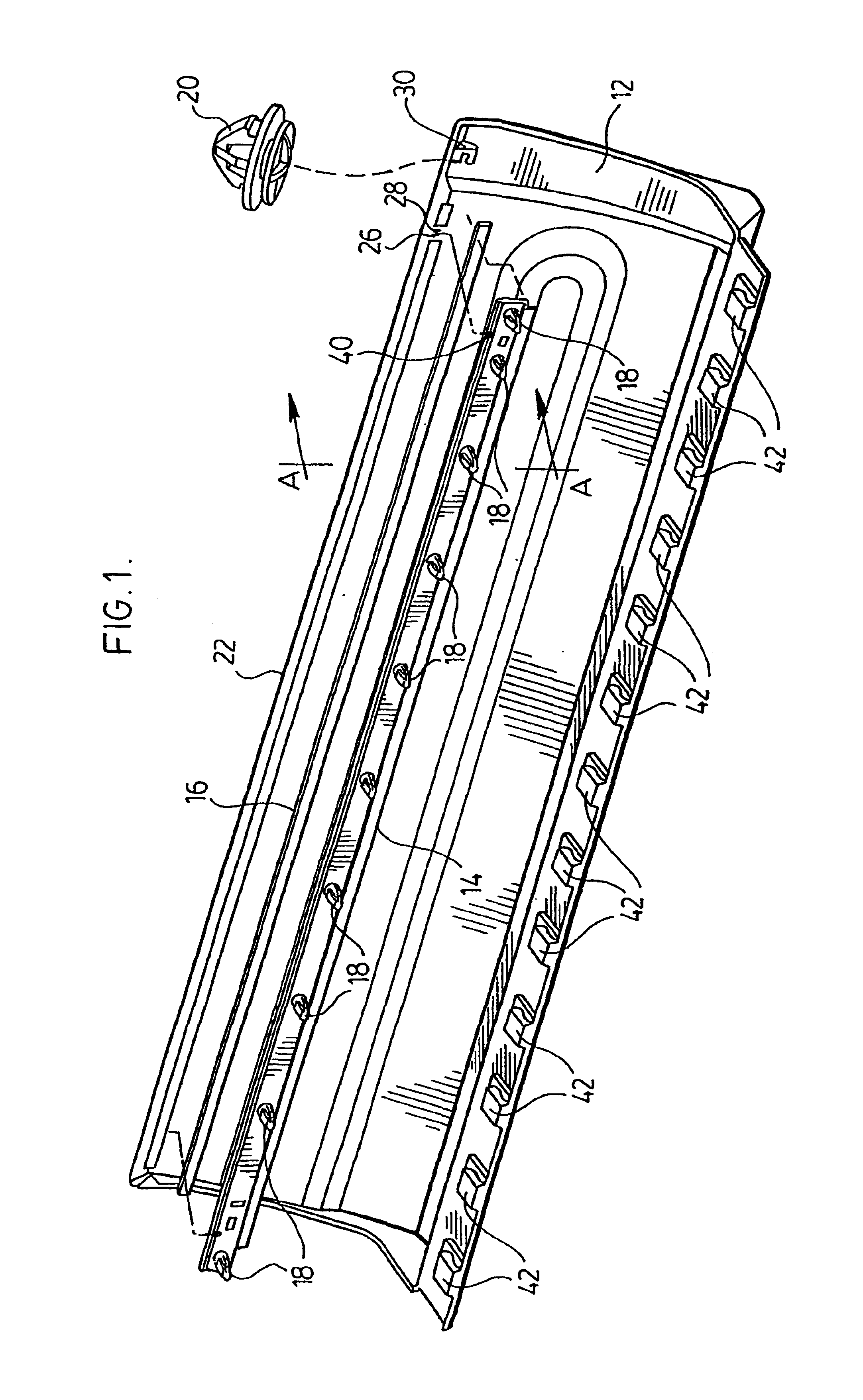Method of attaching a cladding to a vehicle
a technology of cladding and vehicle, which is applied in the direction of roofs, mechanical equipment, transportation and packaging, etc., can solve the problems of plastic and metal being incompatible for welding, plastic and metal having different thermal expansion rates, and certain plastic panels having relatively high hydroscopic growth rates
- Summary
- Abstract
- Description
- Claims
- Application Information
AI Technical Summary
Benefits of technology
Problems solved by technology
Method used
Image
Examples
Embodiment Construction
Referring to FIG. 1, a plastic panel 12 incorporating the attachment method of the present invention is illustrated. Generally, the attachment method comprises a bracket 14, a double sided strip of adhesive tape 16, a plurality of retainers 18 and a secondary retainer 20.
Plastic panel 12 has an outer contour of any desired shaping. Panel 12 can be made of any suitable plastic material, including TPO, PVC, polyurethane, polycarbonate, nylon, SMC (sheet molding compound). Panel 12 has an upper edge 22 having a molded downwardly extending support flange 24 extending longitudinally of the panel 12. The depth and thickness of the flange 24 should be less than the maximum extent allowable to mold without forming sink marks in the outer contoured surface of panel 12. Flange 24 extends substantially the length of panel 12. At one end an opening 26 is preferably provided. A reference nodule 28 is precisely positioned.
Optionally, panel 12 is provided with a dog house 30 having a keyhole for r...
PUM
 Login to View More
Login to View More Abstract
Description
Claims
Application Information
 Login to View More
Login to View More - R&D
- Intellectual Property
- Life Sciences
- Materials
- Tech Scout
- Unparalleled Data Quality
- Higher Quality Content
- 60% Fewer Hallucinations
Browse by: Latest US Patents, China's latest patents, Technical Efficacy Thesaurus, Application Domain, Technology Topic, Popular Technical Reports.
© 2025 PatSnap. All rights reserved.Legal|Privacy policy|Modern Slavery Act Transparency Statement|Sitemap|About US| Contact US: help@patsnap.com



